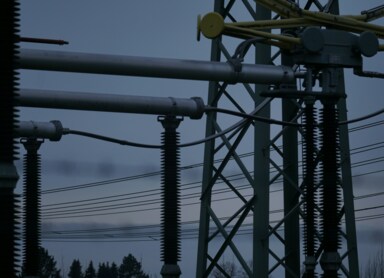Non-renewable energy sources – what are they, what disadvantages do they have, and do they have a future?
Non-renewable, or so-called traditional, energy sources have for decades been the foundation of energy systems around the world. Coal, crude oil, and natural gas are resources that, despite the growing popularity of alternative energy sources, still play a key role in the energy systems of many countries. This situation makes the energy transition, which will help free the global economy from fossil fuels, increasingly urgent. So, what is worth knowing about non-renewable energy sources?
Non-renewable energy sources – examples
Coal, crude oil, natural gas, and uranium are examples of raw materials and fossil fuels which, despite the urgent need for decarbonization, continue to play a key role in global energy production. It is precisely because of energy production from non-renewable sources that the energy sector is one of the most emission-intensive sectors worldwide. The emissions from this sector also determine the carbon footprint of many other industries.
High energy density, relatively easy access to resources, and the long-established infrastructure make non-renewable fuels the first choice from the perspective of stable and predictable energy supply. Many countries around the world—especially those with developed heavy industry or located in regions with harsh climatic conditions—still base their economies on fossil fuels and treat them as a guarantee of energy security. In the long run, however, this creates a closed loop: fossil fuels are finite resources that are slowly being depleted, and excessive exploitation of deposits negatively affects the natural environment, worsening the climate situation in many regions where conditions are already far from ideal.
Non-renewable vs. renewable energy sources – what’s the difference?
The fundamental difference between renewable and non-renewable energy sources lies in their availability over time and the way they are formed. Non-renewable resources used to produce energy, such as coal, crude oil, natural gas, or uranium, are natural resources that formed over millions of years. Their quantity is therefore limited—extraction leads to the gradual depletion of deposits, which, once consumed, cannot be replenished in the near future. Burning non-renewable fuels generates significant amounts of greenhouse gases, which directly contribute to environmental pollution.
Renewable energy sources, such as solar, wind, hydro, or biomass-based energy, are rooted in natural, self-renewing processes. In practice, this means they will remain available as long as the right atmospheric conditions exist—that is, virtually indefinitely. Their advantage lies in the low or zero greenhouse gas emissions during operation. For this reason, they are becoming a key element and foundation of modern energy transition. At the same time, they pose new challenges for energy infrastructure.
Challenges in the use of non-renewable and renewable energy sources
The exploitation of different energy sources, whether traditional or renewable, comes with a range of challenges. In the case of non-renewable sources, one of the main problems is their availability—as limitations grow, extraction and operational costs rise. Another crucial issue is their negative impact on the climate—burning fossil fuels is a fundamental source of greenhouse gas emissions and drives changes across entire ecosystems. A further aspect is energy security, specifically dependence on countries rich in raw materials.
For renewable energy sources, the greatest challenges are technological and infrastructural. Renewables are inherently unstable and dependent on weather conditions. This makes precise production planning and energy balancing much more difficult. A system based on renewables requires the development of effective energy storage, as well as efficient and flexible transmission networks. This, in turn, calls for immediate and costly investments to build such a system.
Non-renewable energy sources – drawbacks
Beyond their negative impact on the natural environment and finite availability, non-renewable energy sources have one fundamental disadvantage—they do not allow for energy independence in countries that lack a given resource. As a result, non-renewable sources such as crude oil or natural gas can directly affect the economies of many countries, especially during times of price fluctuations. Dependence on fossil fuels within a country may also lead to political tensions, “unfair play,” or even real threats to energy security in certain regions. This is why discussions about climate transition increasingly raise the question of whether maintaining the dominant fossil-fuel-based energy model is still possible—or in any way justified—in today’s world.
Non-renewable energy sources – do they have a future?
In the era of accelerating climate transition, driven by ongoing climate change, the future of non-renewable energy sources in the global energy mix is an increasingly pressing issue. Resources such as coal, oil, natural gas, and uranium have for decades formed the backbone of the global industrial and economic ecosystem. Today, their role is no longer as obvious.
In the long term, non-renewable sources will lose significance, although some of them will continue to serve as so-called transitional fuels in the near future, supporting unstable systems based on renewable sources. Due to increasing regulatory pressure and the growth of renewable technologies, green energy is becoming cheaper and more accessible. Leaders of global economies are already planning to achieve near-total carbon neutrality within the coming decades. At the same time, infrastructure necessary for boosting the share of renewables in the energy system is being developed—investments are flowing into energy storage, smart grids, and innovative energy sources such as hydrogen or small modular reactors.
Will non-renewable energy sources disappear entirely in the near future? Not necessarily. In the coming decades, their role may be limited to selected industrial sectors, such as metallurgy or chemicals, or to countries that lack the conditions to deploy renewable energy solutions. The future of non-renewable energy, therefore, is not about their complete elimination, but rather about gradually reducing their role and shifting their function in the energy system from fundamental to supportive.
Renewable energy – how to develop infrastructure?
The energy transition—freeing the global energy system from dependence on non-renewable fuels—is one of the greatest challenges humanity faces. For it to gain momentum and succeed, the energy system must be gradually expanded to enable the generation, storage, and transmission of energy from renewable sources. Several factors are critical, including the modernization of existing energy infrastructure, the construction of new components, spatial planning, regulatory frameworks, and financing.
Non-renewable energy sources bring stability and security of supply to energy systems. Renewable sources, in turn, have the advantage of not harming the environment to the same extent as fossil fuels. In the near future, the focus will be on integrating energy from various sources while gradually building infrastructure tailored to the dominance of renewables.






